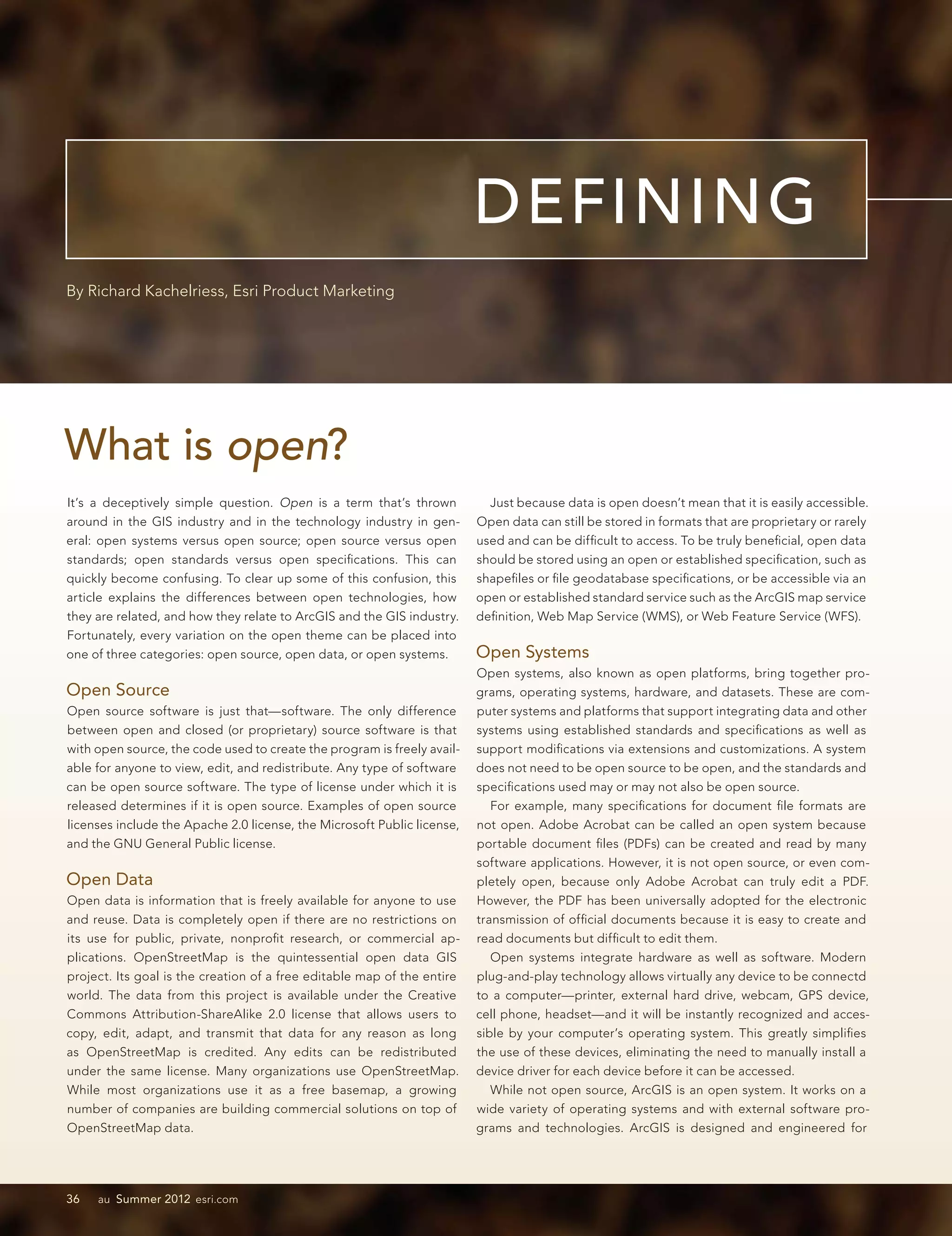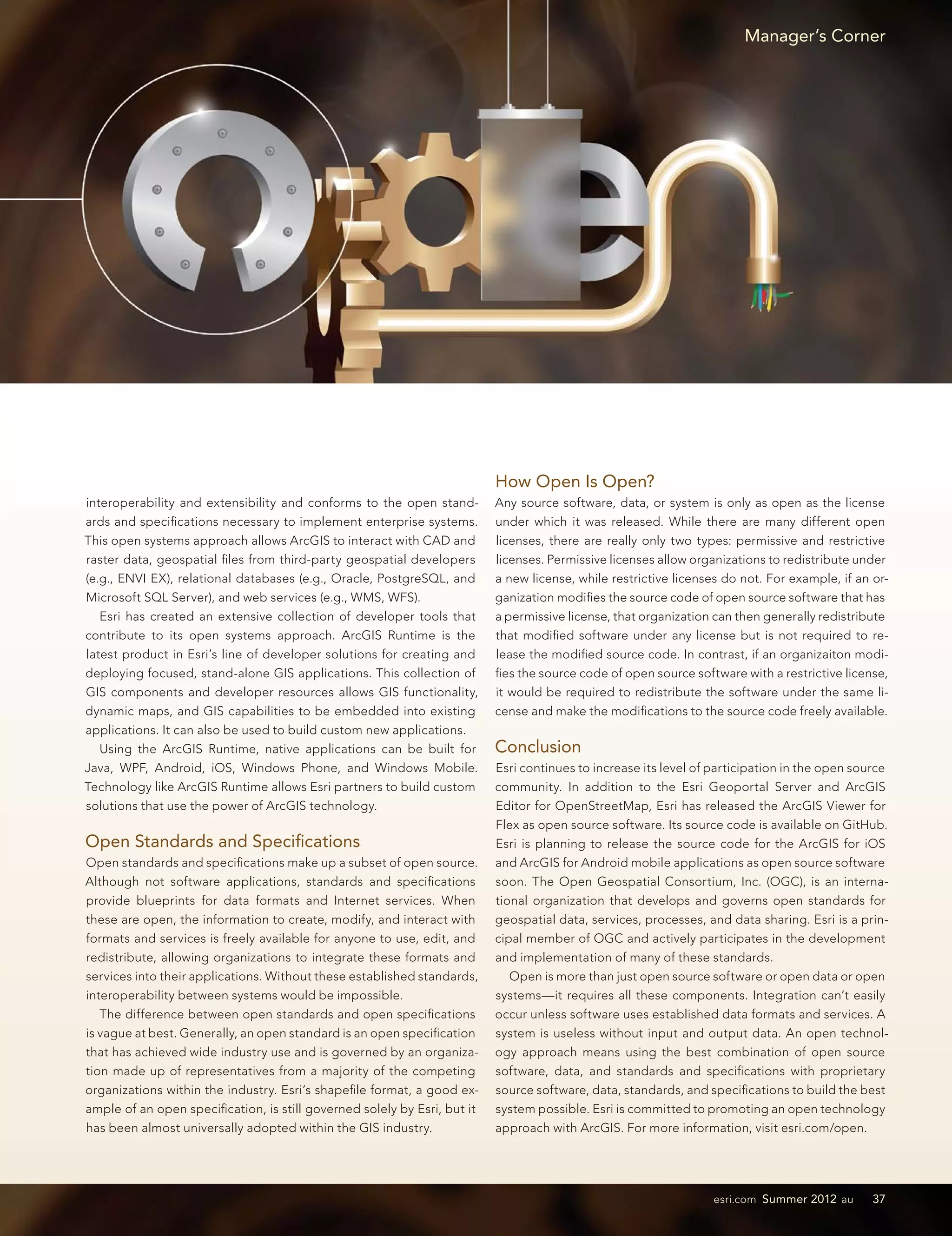The document discusses the complexities of the term 'open' in the context of GIS and technology, categorizing it into open source, open data, and open systems. It emphasizes that true openness requires adherence to established specifications and standards, and all open technologies should facilitate interoperability and extensibility. Additionally, it highlights ESRI's commitment to integrating open principles in its ArcGIS products and its active participation in the open standards community.

